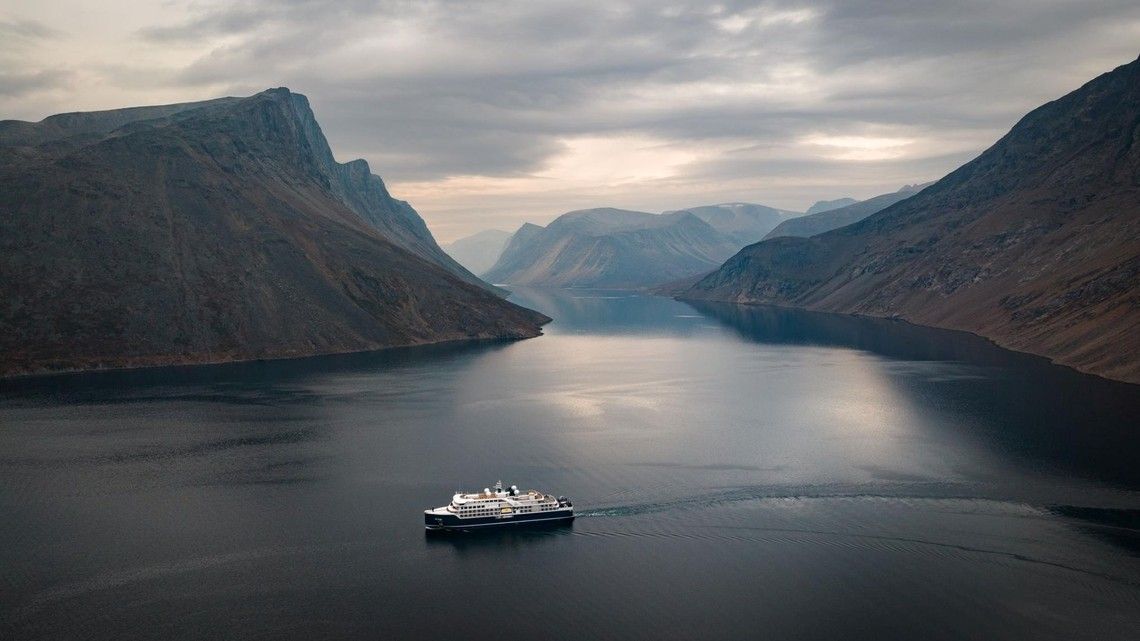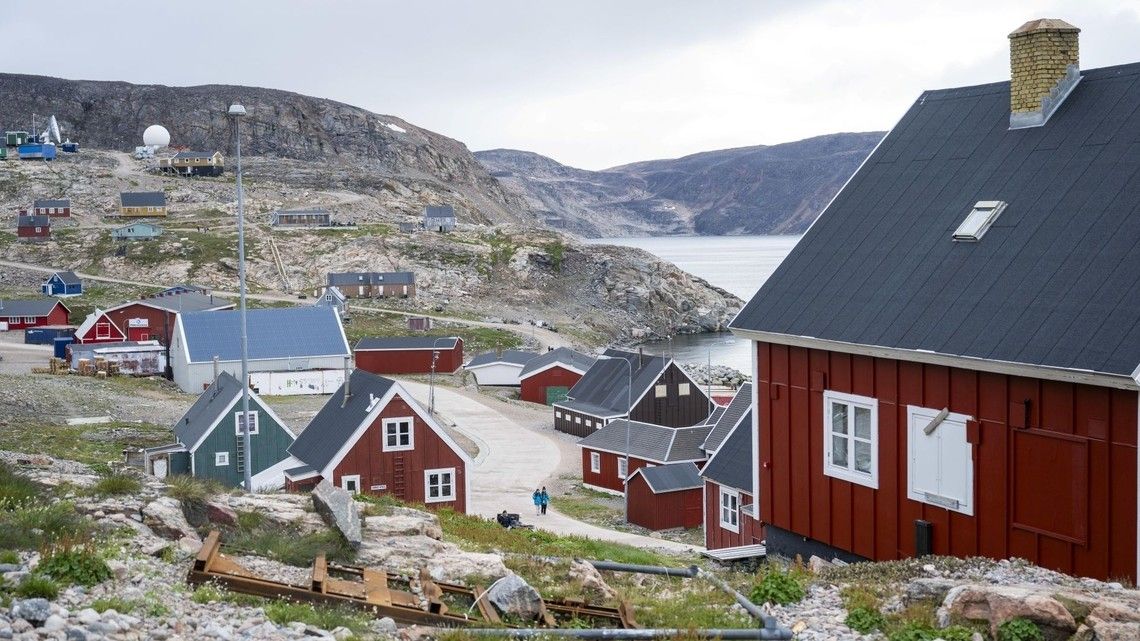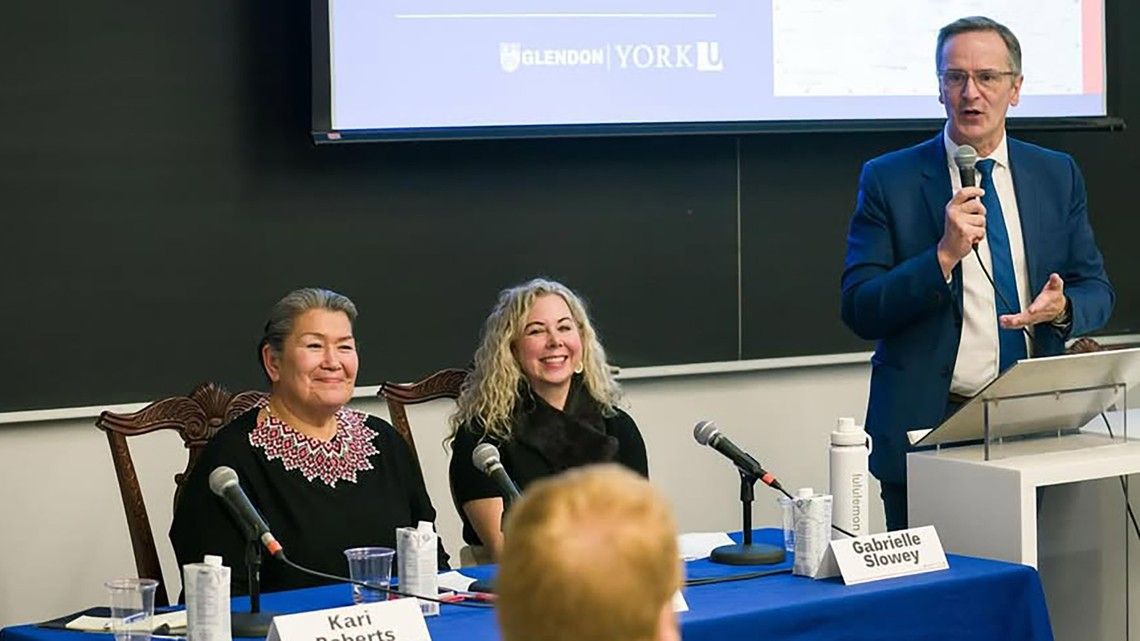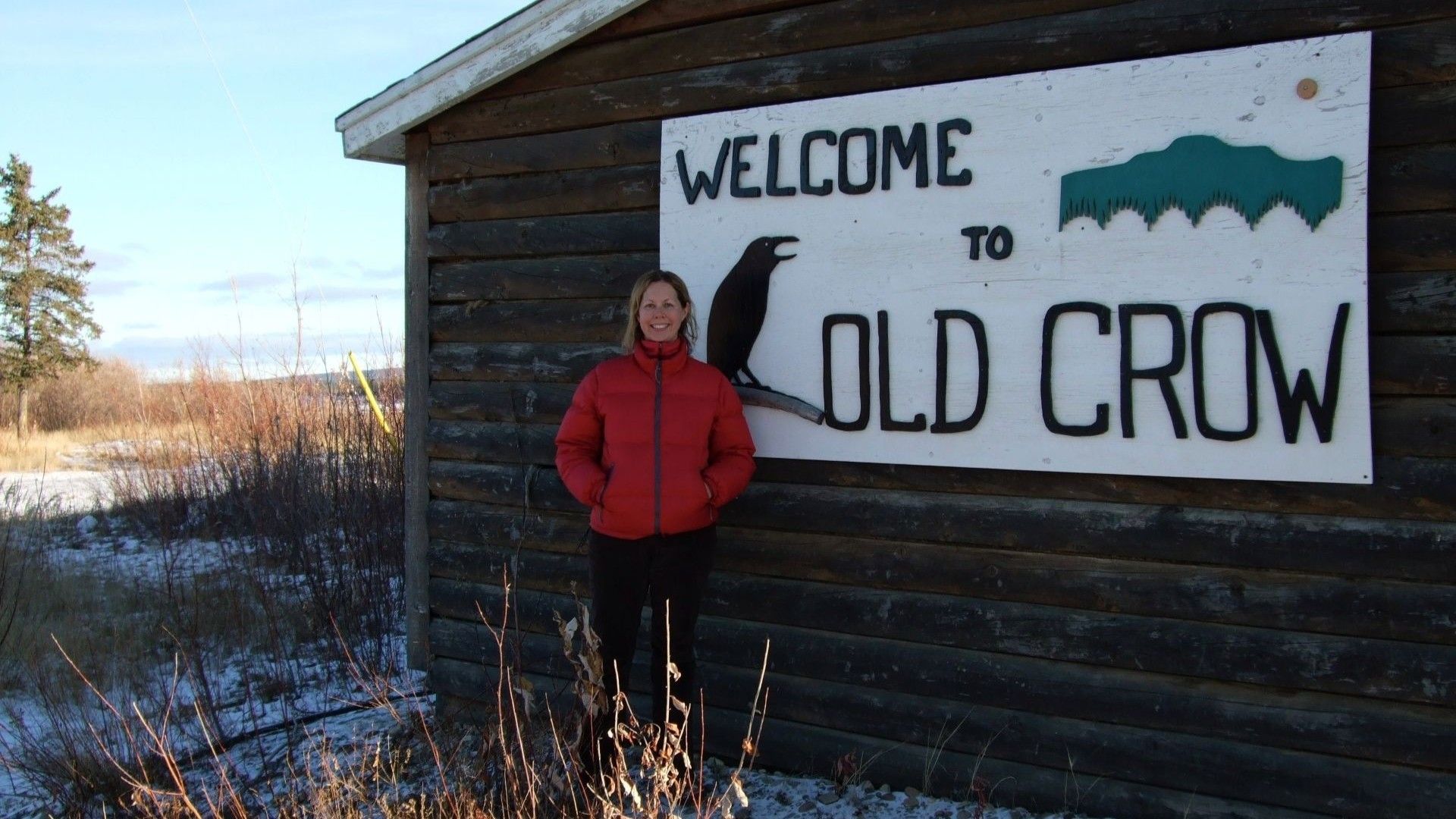Что происходит, когда будущий юрист попадает в отдаленную общину коренных народов на севере Альберты и остается там навсегда? В случае Габриэль Слоуи это положило начало карьере, посвященной изучению самоуправления коренных народов, политики в области ресурсов и будущего канадской Арктики, которое стремительно меняется. Политолог и невероятный рассказчик, Габриэль десятилетиями тесно сотрудничала с общинами на севере страны, часто посещая места, отрезанные от мира. Она погружалась в исследования, участвовала в разработке политических решений, делилась знаниями со старейшинами — и даже прыгала в ледниковые озёра. В преддверии грядущих путешествий со Swan Hellenic по Северо-Западному проходу и горам Торнгат Габриэль рассказывает, почему Арктика — это не только величественные ландшафты, но и живой, динамичный, управляемый мир, которому стоит уделять больше внимания.
«Я человек действия — я не занимаюсь политикой дистанционно. Есть причина почему у каждого из нас есть два глаза и два уха». «Самоуправление не является чем-то новым для коренных народов. Они занимались самоуправлением задолго до нашего появления».
Привет, Габриэль! Ваша работа охватывает невероятно широкий спектр — от управления коренными народами до энергетической политики Арктики. Что подтолкнуло вас выбрать именно эту сложную и увлекательную область?
Габриэль: Изначально я всерьёз собиралась стать специалистом по конституционному праву. Во время учёбы я подрабатывала в юридической фирме и довольно быстро поняла: меня привлекает не столько юридическая практика, сколько сама идея устройства права. На последнем курсе учебы я записалась на цикл лекций «Политика Северо-Западных территорий» в Университете Торонто — и именно он стал поворотным моментом. Это было время, когда создавался Нунавут — новая родина инуитов. Параллельно я наткнулась на статью Globe and Mail о возможных алмазных месторождениях на Севере. Меня это заинтриговало. Я написала работу о самоуправлении и земельных претензиях, получила «A+» и вдруг почувствовала: тут есть нечто большее — тонкая связь между управлением, природными ресурсами и жизнью коренных народов. Так я поступила в магистратуру в Нью-Брансуике, а затем получила работу в Форт-Чипевьяне (Альберта) как специалист по вопросам самоуправления. Я буквально перелетела через всю страну — ещё до эпохи Google Earth — и оказалась в общине, куда можно было добраться только по воздуху, к северу от того, что тогда называли нефтеносными песками. Там я помогала коренным народам разрабатывать устав и соглашения о правопорядке — не из офиса, а работая рядом с людьми, для которых эти решения были жизненно важны. Так что моё погружение в эту сферу стало результатом сочетания географии, любопытства и удачного стечения обстоятельств.
Вы много лет работали непосредственно с коренными народами Канады и других стран. Как это повлияло на ваше понимание Арктики?
Габриэль: Большинство людей представляет Арктику через картинки или литературные образы — как огромный, нетронутый, почти пустынный край. Но для коренных народов это вовсе не бесплодная территория, это их дом. То, что мы называем пространством, для них — миграционные пути карибу, охотничьи районы, традиционные тропы. Это большая, открытая, но очень живая и активно используемая территория. Она может казаться безлюдной, но точно не бесплодной и не пустой, как это нередко описывают. Жизнь в общине и наблюдение за Арктикой глазами её коренных жителей дали мне куда более глубокое понимание — и сложностей, и красоты этого региона. Благодаря этому я увидела Арктику такой, какая она есть на самом деле.
В 2025 году вы присоединитесь к гостям Swan Hellenic в двух последовательных круизах по Арктике. Чем вам больше всего хочется поделиться с гостями, которые планируют путешествие через Северо-Западный проход?
Габриэль: Мне особенно дороги горы Торнгат, но я также очень жду встречи с Северо-Западным проходом. Мало кому из канадцев выпадает шанс увидеть его своими глазами, и возможность представить, как выглядел этот путь для первых исследователей, — настоящий подарок. Я с удовольствием прочитаю лекцию об экспедиции Франклина. Сейчас я как раз готовлю рассказ, основанный на историях инуитов, которые делились своими наблюдениями о том, как меняется этот ландшафт. Надеюсь, гости не выбросят меня за борт — я могу говорить об этом бесконечно!

Сообщество превыше всего
Что, по вашему мнению, удивит тех, кто впервые посетит канадскую Арктику?
Габриэль: Многих удивит то, что большую часть своей истории канадское правительство практически не уделяло внимания Арктике. Лишь после Второй мировой войны, когда в регион вошли американцы, государство наконец осознало её стратегическую важность. Затем начались серьёзные перемены — порой крайне болезненные. Один из самых ярких примеров — насильное переселение инуитов в высокоширотную Арктику с целью укрепления суверенитета Канады. По сути, их воспринимали как «живые флаги». И всё же, несмотря на сложности в прошлом, современные инуиты гордятся тем что они - канадцы. Это одна из самых удивительных и важных особенностей истории Арктики, которую редко понимают
Когда вы не преподаёте и не занимаететесь исследованиями, как вы любите проводить время на Севере?
В своих исследованиях вы часто затрагиваете политику, которая стоит за темой природных ресурсов. Но вот вы стоите на палубе и смотрите на дрейфующие айсберги — о чём вы думаете в такие моменты?
Габриэль: Я много думала о морской нефти, миграции нарвалов, сейсмических исследованиях. Я знаю об этом в теории, но увидеть всё своими глазами — это нечто иное. Это ключ к моим исследованиям. «Я человек действия — я не занимаюсь политикой дистанционно. Один из главных уроков, которые преподали мне северные общины, звучит так: «Есть причина, почему у каждого из нас есть два глаза и два уха». Я еду туда, чтобы смотреть и слушать — и говорить только тогда, когда это действительно важно. Для меня это возможность по-настоящему «натренировать» свои глаза и уши.

Где политика встречается с реальностью
Что, по вашему мнению, пассажиры круизных судов должны знать о политической ситуации в Арктике сегодня?
Габриэль: Прежде всего — важно понимать, что не существует единой, однородной «Арктики». В Канаде это три совершенно разные территории, каждая со своей культурой, историей и опытом: Юкон, Северо-Западные территории и Нунавут. И они действительно очень отличаются друг от друга. Нунавут, например, появился потому, что инуиты хотели создать собственную систему управления, отдельно от народов дэнэ и метисов. И сегодня это уже полноценные правительства, а не просто местные общины. Федеральное правительство не может — как это было в прошлом — диктовать им, что делать. У этих территорий есть собственный голос, собственная политическая сила, и место за столом, где принимаются решения. Это важно. Арктика больше не является объектом, управляемым извне — она сама становится активным участником собственного будущего.
Один из ваших недавних проектов посвящен изучению взаимодействия предпочтений инуитов в сфере найма с профсоюзами южных регионов. Как вы делаете такие темы интересными для слушателей?
Габриэль: Честно говоря, даже в моих профессиональных кругах об этом говорят редко! В Нунавуте около 85% рабочей силы — приезжие. Это огромная цифра, и она означает, что инуиты фактически теряют рабочие места. Но ситуация постепенно меняется. Одна из инуитских организаций разработала приложение, куда охотники, мастера-швеи и другие жители могут ввести информацию о своих традиционных навыках. Система автоматически преобразует их в современное резюме, «переводя» эти умения на язык востребованных профессий. Так люди получают доступ к тем должностям, о которых раньше даже не думали. Это настоящий пример экономического примирения — поиска путей, при которых традиционный образ жизни не исчезает, а становится частью новых возможностей.
Ваша работа напоминает нам, что Арктика — это не только дикая и обширная территория, но и место, где ведётся активная политическая жизнь. Как вы справляетесь с этим контрастом во время лекций?
Габриэль: Не уверена, что всегда справляюсь лучше других — многие инуитские ораторы передают это куда ярче. Но я использую один приём: показываю слушателям изображение и спрашиваю — «Что вы видите?» Если ответа нет, прошу посмотреть ещё раз. Это как сцена из «Матрицы», где за поверхностью скрывается настоящий код. Так устроена Арктика: это своего рода город — только без небоскрёбов и шоссе. Он наполнен смыслами, связями, маршрутами, историями. Нужно просто научиться его «читать».
Вы много писали о земле, власти и сообществе. Расскажите о самом запоминающемся моменте из путешествий по Арктике, связанном именно с людьми?
Габриэль: У меня было так много удивительных впечатлений — от потлачей до походов к ледникам. Но больше всего в памяти остаются не события, а фразы, которые я слышала от людей. Однажды я спросила старейшину о соглашениях, земельных претензиях и договорах. Он посмотрел на меня и сказал: «Это значит, что мы больше не просим». Когда-то, когда эти территории подпадали под действие Закона об индейцах, общины действительно должны были просить федеральное правительство о каждом решении. Теперь же, имея собственные правительства, они принимают решения сами. Для меня это было невероятно сильное, почти историческое утверждение. Другая фраза, которая осталась со мной навсегда: «Наши дети носят один мокасин и один кроссовок». Этот образ — жизнь одновременно в двух мирах — потрясающе точно описывает то, что сегодня происходит в Арктике. Это реальность, в которой традиции и современность идут рядом, формируя новое будущее северных сообществ.

picture courtesy of @glendoncampus
Истории и маленькие моменты
Когда вы не на дежурстве на борту, чем вы любите заниматься?**
Габриэль: Горячий шоколад — мой фаворит! А ещё я очень люблю плавать, хотя однажды усвоила важный урок: в ледниковую воду голову лучше не погружать. Один из моих первых походов в Юконе – яркое напоминание об этом. Мы были в горах Святого Ильи с небольшой группой — три девочки и их мама. Дойдя до ледника, мы зашли в воду. Было жарко, и я решила окунуть голову. В ту секунду, когда я вынырнула, мне показалось, что ледяной лазер пронзил мой череп — настолько это было холодно. Девочки разразились смехом и сказали: «Никто не окунает голову в такую воду!» Урок я усвоила мгновенно: теперь я с удовольствием захожу в ледниковые озёра, но голова остаётся над водой. И да, я люблю поговорить. Мне правда интересно узнавать гостей — что привело их в это путешествие, что они хотят увидеть, чему научиться. В этом и есть вся магия — в людях, историях и маленьких моментах, которые складываются в большое путешествие.
Вы работали с сообществами по всей Арктике. Что в повседневной жизни Севера чаще всего удивляет людей?
Габриэль: Многих поражают самые обыденные вещи. Вода привозится в дома на грузовиках, а сточные воды ежедневно откачиваются — никакой подземной канализации. В большинстве населённых пунктов есть всего один магазин — Northern Store, где можно купить всё: от подгузников до снегоходов. Нет переработки мусора. Нет асфальта — все дороги грунтовые. Это всегда шокирует приезжих, но именно так выглядит повседневная жизнь канадской Арктики.
Как сделать сложные политические идеи — такие как самоопределение или примирение — понятными и интересными для путешественников?
Габриэль: На самом деле это похоже на преподавание: нужно свести абстрактное к человеческому масштабу. Самоуправление — не что-то новое. Коренные народы управляли своими общинами задолго до появления поселенцев. Сегодня речь идёт о праве выбирать собственный путь. Примирение — это признание вреда, который мы, поселенцы, нанесли коренным народам, и создание пространства для исцеления, восстановления отношений и доверия. Мне кажется, моя искренность и страсть к этим темам помогают людям увидеть, что за политическими терминами стоят реальные истории и живые сообщества.
Вы видели Арктику в самых разных проявлениях. Каково это — находиться в месте, где день или почти кромешная тьма могут длиться неделями?
Габриэль: Это совершенно невероятно. Я была там в феврале, когда солнце появляется около десяти утра, лениво тянется вдоль горизонта и тут же исчезает. И была летом, когда оно не заходит вообще. В свой первый визит я даже не подумала взять маску для сна — и очень быстро поняла, что это ошибка! Теперь она всегда лежит в моём чемодане. Такие вещи — часть особой магии Арктики. Здесь всё другое: ритм, восприятие времени, даже сам свет работает по своим законам.
И наконец — после всех ваших исследований, путешествий и преподавания, что в канадской Арктике продолжает удивлять вас каждый раз, когда вы туда возвращаетесь?
Габриэль: То, что она никогда не повторяется. Арктика постоянно меняется с политической, культурной, экологической точки зрения. Люди часто думают, что это неподвижное пространство. Но, как морской лёд и как люди, живущие там, Арктика находится в бесконечном движении. И именно это движение — живое, непредсказуемое, настоящее — снова и снова притягивает меня обратно.
